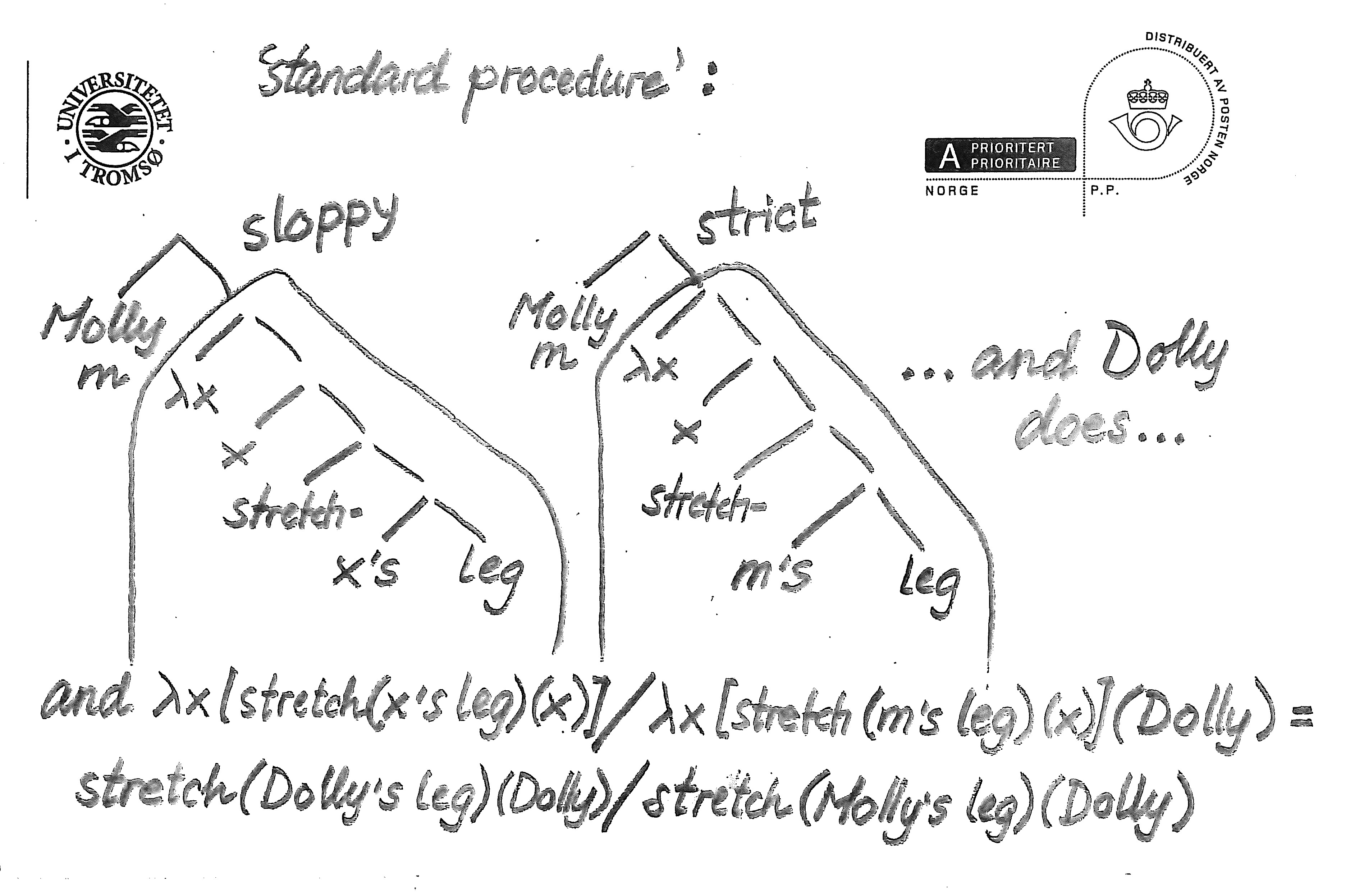Sentence (1) is ambiguous. On one reading, Molly's mother is proud of the bass Molly caught, on the other, she is proud of the bass she herself caught. The former is the strict reading, the latter is the sloppy reading.
(1) Molly is proud of the bass she caught, and so is her mother.
Standardly, the source of the ambiguity is placed in the antecedent, the first, ellipsis-less clause.
Ambiguous antecedent

The standard approach to ambiguous VP ellipsis assumes that the antecedent is ambiguous while the 'copy' is not – more exactly, that a pronoun (like she in (1)) or an anaphor (like her in (2)) can be bound in two ways: directly by the subject or by the VP abstractor.
(2) Molly stretched her leg and Dolly did too.
(To get the strict reading, imagine that the leg was cramped and Dolly is a physiotherapist.) Sloppily, the antecedent VP is either to stretch Molly's leg (strict) or to stretch one's leg (sloppy).
The note on the right may give a rough idea. λ is the VP abstractor.
One exponent of this approach can be found in Liz Coppock and Lucas Champollion: Invitation to Formal Semantics (draft of Aug 21, 2020), esp. pp. 290ff.
Unambiguous antecedent (deep)
One way of deriving the two readings without assuming an ambiguity in the antecedent or that the ellipsis is an expression built but not pronounced is to follow Rooth (1992a) (A theory of focus interpretation) and (1992b) (Ellipsis redundancy and reduction redundancy):
The antecedent VP may be to stretch Molly's leg or it may be to stretch one's leg – that doesn't matter; what matters is that there are two ways to resolve the focus presupposition of [Dolly]F did, namely,
– by using the property of stretching one's leg to build the antecedent proposition about the alternative (Molly) to Dolly, or
– by using the property of stretching Molly's leg to build that antecedent proposition.
Then what Dolly is understood as doing, echoing the two ways to resolve the focus presupposition, is either stretching one's, that is, her own, leg (the sloppy interpretation), or it is stretching Molly's (the strict interpretation).
Unambiguous antecedent (surface)
Another way of deriving the two readings without assuming an ambiguity in the antecedent is to assume that the ellipsis is an expression, copied, as it were, from preceding discourse but deleted under identity – complete with the anaphor or pronoun left unresolved. Hardt (1992) (VP ellipsis and semantic identity) argued for this from cases like (3).
(3) Every scout hopes the troop leader will reward her. In Molly's case, she probably will.
Simply put, the logical form of the elided VP is not reward xi where xi is bound by Mollyi but reward her.
But in view of counterevidence like (4), Kehler (2015) (On QUD-based licensing of strict and sloppy ambiguities) has proposed a different analysis of cases like (3): The role of in Molly's case, not shared by since Molly caught the big bass, is to put the question whether the troop leader will reward Molly under discussion, and this question is then what serves as antecedent for the VP ellipsis.
(4) Every scout hopes the troop leader will reward her. #Since Molly caught the big bass, she probably will.